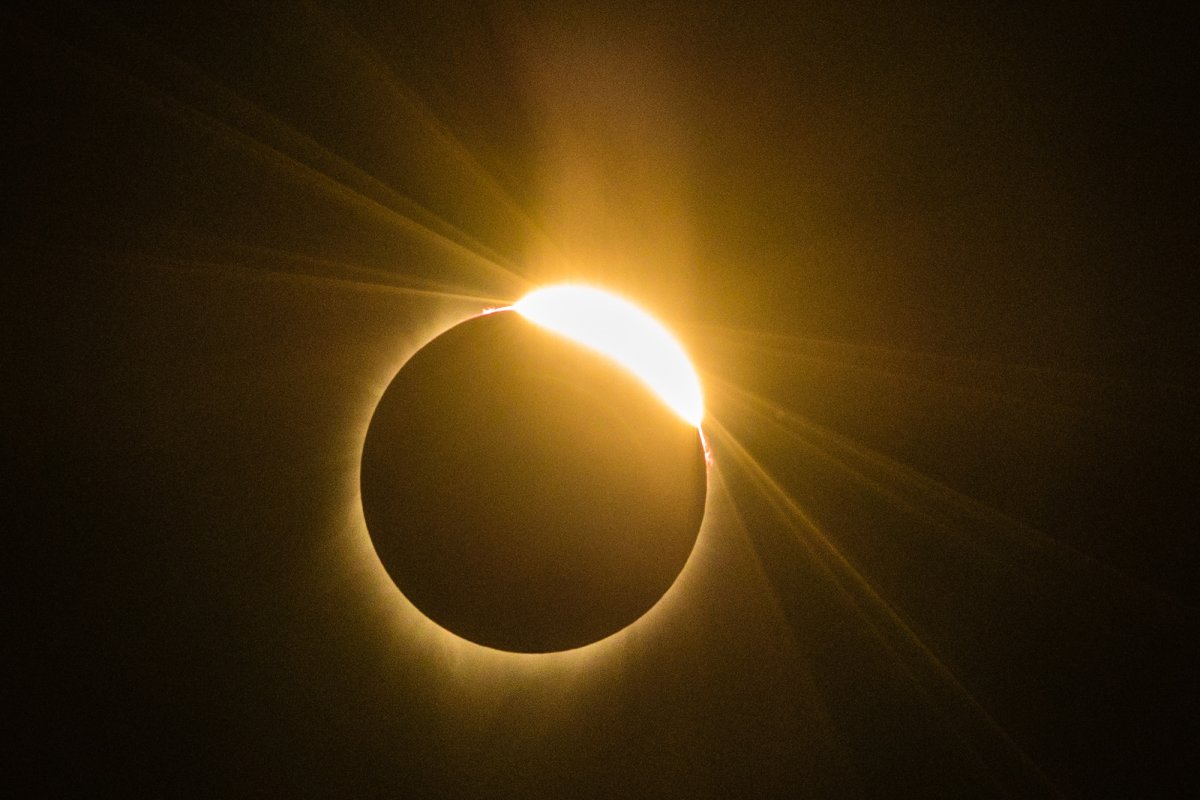The weather could suddenly change for some areas when the solar eclipse arrives in roughly three weeks.
On April 8, the moon will be positioned so that the entire disc of the sun will be blocked in several U.S. states, plunging millions of people into darkness during the early afternoon.
The path of totality will start in Mexico and extend across Texas, Oklahoma, Arkansas, Missouri, Illinois, Indiana, Ohio, New York, Pennsylvania, Vermont, New Hampshire and Maine before heading over the North Atlantic.

The spectacle is expected to draw crowds from around the nation as people head to areas in the path of totality to witness the eclipse. Officials across the nation have voiced concerns about stretched public safety resources, an "enormous strain" on local hospitals and congested roadways. In addition to plunging those in the path of totality into darkness, the solar eclipse has the capacity to change the weather.
"T-20 days until the total solar eclipse on April 8th! During a solar eclipse, we can observe changes in the weather on Earth in the eclipse's path. Temperatures can drop, cloud cover can decrease, relative humidity can increase, and winds can decrease," the National Weather Service (NWS) Weather Prediction Center posted on X, formerly Twitter, on Tuesday.
☀️🌘🌎 T-20 days until the total solar eclipse on April 8th! During a solar eclipse, we can observe changes in the weather on Earth in the eclipse's path. Temperatures can drop, cloud cover can decrease, relative humidity can increase, and winds can decrease. pic.twitter.com/IhY1jhRSe2
— NWS Weather Prediction Center (@NWSWPC) March 19, 2024
Temperatures drop because the sun's light is blocked, cloud cover decreases because of decreased solar radiation and dropping temperatures, relative humidity increases once the temperature gets closer to the dewpoint and decreased solar radiation and convection can lead to decreased winds.
NWS Weather Prediction Center meteorologist Josh Weiss told Newsweek that temperatures could start to drop as much as 60 minutes before totality.
"Maybe halfway through the first part of the eclipse you will start to notice temperatures drop and clouds decrease," he said. "It's not just the three to four minutes of totality."
However, once the eclipse is finished, there's a very quick return to normalcy.
"After 5 to 15 minutes, temperatures recover very quickly and cloud cover starts to increase as well," Weiss said.
The solar eclipse has attracted plenty of attention and millions of people are planning to travel within the path of totality on April 8.
Some Texas cities are expecting their population to triple because of the number of visitors. At least four states have urged residents to stock up on groceries and gas in the days leading up to the eclipse, as traffic is expected to overwhelm local roads, and some schools plan to close for the day.
Uncommon Knowledge
Newsweek is committed to challenging conventional wisdom and finding connections in the search for common ground.
Newsweek is committed to challenging conventional wisdom and finding connections in the search for common ground.
About the writer
Anna Skinner is a Newsweek senior reporter based in Indianapolis. Her focus is reporting on the climate, environment and weather ... Read more
To read how Newsweek uses AI as a newsroom tool, Click here.






